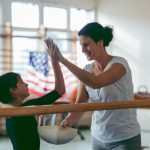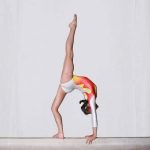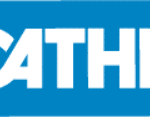
Why do gymnasts have big thighs? is a question that piques the curiosity of many who take an interest in the sport.
Gymnasts, both male and female, display an incredible combination of strength with their muscular thighs standing out as a testament to their rigorous training and discipline. This guide delves into the intense training routines to uncover the reasons behind the development of strong, sizeable thighs among many elite gymnasts.
Which Leg Muscles Do Gymnasts Use?
Gymnasts use a full range of leg muscles to perform skills, with each muscle group playing a crucial role in their overall performance. Here are the key leg muscles utilized by gymnasts:
- Quadriceps – Located at the front of the thigh, the quadriceps are critical for knee extension and are heavily used in jumps, landings, and tumbling maneuvers.
- Hamstrings – These muscles run along the back of the thigh and are vital for bending the knee and extending the hip. They work in tandem with the quadriceps to provide power and control in gymnastic movements.
- Gluteus Maximus, Medius, and Minimus – The gluteal muscles contribute to hip extension, abduction, and rotation. They are essential for maintaining stability and power during floor exercises, vaults, and balance beam routines.
- Calves (Gastrocnemius and Soleus) – These muscles are crucial for pushing off the ground, aiding in jumps and flips. They also help stabilize landings and maintain balance on the beam.
- Hip Flexors – These muscles, including the psoas major and iliacus, are important for lifting the legs during leaps and jumps. They also contribute to maintaining a strong core, which is essential for gymnastics.
- Adductors – Located on the inner thigh, these muscles help gymnasts in controlling leg movements during splits, jumps, and while maintaining balance.
- Tibialis Anterior – This muscle runs along the shin and is important for dorsiflexion of the foot. It helps gymnasts point their toes, a critical aspect of the sport’s aesthetics.

Quadriceps, Hip Flexors, Hamstrings and Adductors are the main muscle groups which make up the thighs. Strength and conditioning exercises are vital for gymnasts to develop more advanced skills and many of these exercises will focus on these same muscle groups.
Consequently, as these muscle groups become stronger they often become bulkier and result in gymnasts having bigger thighs.
The Science of Gymnasts Big Thighs
Gymnasts develop notable leg muscles due to their rigorous training and the specific requirements of the sport. Let’s take a closer look at the key factors that contribute to their impressive leg development.
Muscular Development
Gymnastics training places a significant emphasis on lower body strength. The repeated execution of explosive movements, such as jumps and flips, leads to the development of lean and powerful leg muscles. Gymnasts engage in a variety of exercises that target the quadriceps, hamstrings, calves, and glutes, resulting in increased muscle mass and definition.
Common leg strength building exercises include:
- Squats
- Plyometric jumps
- Mountain Climbers
- Calf Raises
Quadriceps Dominance
The quadriceps muscles, located at the front of the thighs, play a crucial role in gymnastics. They are responsible for extending the knee joint and providing explosive power during jumps and landings. The repeated activation and strengthening of the quadriceps muscles contribute to the development of substantial leg size and strength.
Hamstring and Glute Strength
While the quadriceps muscles are highly involved in gymnastics, the hamstrings and glutes also play important roles. These muscles provide stability, control, and power during landings from skills such as leaps and tumbling. Gymnasts perform exercises specifically designed to target these muscle groups, resulting in well-developed hamstrings and glutes.
Training Regime
Competitive Gymnasts follow a structured training regime that is designed to optimize their physical performance. Their training focuses on various aspects, including strength and conditioning. However, when it comes to leg development, certain key elements of their training program stand out.

Focus on Lower Body Exercises
Gymnasts dedicate a significant portion of their strength and conditioning sessions to lower-body exercises. Squats, lunges, leg presses, and calf raises are commonly included to strengthen the leg muscles. These exercises are performed with high intensity and often incorporate additional weights or resistance to challenge the muscles further to stimulate growth and strength.
Plyometrics and Explosive Movements
In addition to traditional strength training exercises, gymnasts incorporate plyometric exercises into their routines. Plyometrics involves explosive movements that help improve power and speed. Exercises such as box jumps, depth jumps, and bounding are performed to enhance the gymnasts’ ability to generate force and power through their legs.
The rebound of the sprung floor or tumble track is utilized to develop the best levels of Plyometrics. A simple sequence would be a Straight jump, tuck jump, straddle jump, front somersault. The jumps should be linked with immediate takeoff from one to another.
Balance and Stability Training
Gymnastics requires exceptional balance and stability, and gymnasts train specifically to improve these skills. Balance beam exercises, one-legged drills, and stability ball exercises are incorporated into their training regime. These exercises not only develop the leg muscles but also improve proprioception and control, leading to greater overall performance.
Role of Genetics
While training plays a significant role in the development of gymnasts’ leg muscles, genetics also contribute to their impressive physique. Genetic factors influence muscle growth, body composition, and muscle fiber types, all of which impact the size and strength of the legs. Many people ask does gymnastics make you short? Debate surrounds the point that coaches possibly only select short gymnasts in the first place which would point to the genetics rather than the training itself.
The same argument can be applied with regard to the large physical appearance of some gymnasts’ legs.
Genetic Predisposition for Muscle Growth
Some individuals naturally have a genetic predisposition for greater muscle growth and development. This means that gymnasts with favorable genetic traits may have an easier time building and toning their leg muscles. However, it’s important to note that genetics alone cannot account for the impressive leg development seen in gymnasts; rigorous training remains a crucial factor.
Body Composition and Muscle Fiber Types
Body composition, including the distribution of muscle and fat, varies among individuals. Gymnasts tend to have a lower body fat percentage, which allows their well-developed leg muscles to be more visible. Moreover, the proportion of fast-twitch muscle fibers, which are responsible for explosive movements, is higher in gymnasts. This genetic advantage contributes to their ability to generate power and strength in their legs.
Nutritional Considerations for Big Thighs
To support the demanding physical requirements of gymnastics and promote muscle growth, proper nutrition is essential. Here are some key nutritional considerations for gymnasts’ leg development:
- Caloric Intake and Macronutrient Balance
Gymnasts need to consume an adequate amount of calories to meet their energy demands. Caloric intake should be balanced with the energy expenditure from training sessions and other activities. Additionally, a proper balance of macronutrients—carbohydrates, proteins, and fats—is crucial to support muscle growth and recovery.
- Protein for Muscle Repair and Growth
Protein is vital for muscle repair and growth. Gymnasts should ensure they consume enough protein from sources such as lean meats, poultry, fish, dairy products, legumes, and plant-based protein sources. Aiming for a sufficient protein intake helps provide the necessary building blocks for muscle development.

- Carbohydrates for Energy
Carbohydrates are the primary source of energy for intense physical activity. Gymnasts require sufficient carbohydrates to fuel their training sessions and optimize performance. Complex carbohydrates, such as whole grains, fruits, and vegetables, should be prioritized for sustained energy release.
Benefits of Big Thighs in Gymnastics
The significant leg development seen in gymnasts offers numerous benefits to their performance. Let’s explore some of the advantages of having big legs in gymnastics:
Power and Explosiveness: Gymnastics routines often involve explosive movements, such as vaulting and tumbling. Strong leg muscles provide the power and force needed to execute these moves with precision and height, allowing gymnasts to showcase their skills effectively.
Balance and Stability: Gymnastics requires exceptional balance and stability. Strong legs contribute to a solid foundation, enabling gymnasts to maintain balance during intricate movements and perform with grace and control.
Injury Prevention: Well-developed leg muscles provide stability and support to the joints, reducing the risk of injuries. Strong legs help absorb impact during landings and provide a protective cushioning effect. This helps prevent common gymnastics-related injuries, such as sprains and strains.
Common Myths and Misconceptions
When it comes to gymnasts’ big legs, there are several myths and misconceptions that need to be addressed:
- Bulky versus Toned Muscles
One common misconception is that gymnasts have bulky muscles. In reality, their leg muscles are well-defined and toned, rather than excessively bulky. The rigorous training and emphasis on body control result in lean muscle development, enhancing their athletic performance and aesthetic appeal.
- Stereotypes and Body Image
Another myth revolves around body image and the idea that gymnasts must have a certain body type. It’s important to recognize that every gymnast’s body is unique, and their leg development is a result of their training and genetics. It’s crucial to appreciate and celebrate the diversity of body types within the gymnastics community.
Final Thoughts
The impressive leg development seen in gymnasts is a result of a combination of factors, including rigorous training, genetic predisposition, and proper nutrition.
The focused training on lower body exercises, plyometrics, balance, and stability, along with a genetic advantage for muscle growth, contribute to the strong and well-defined leg muscles of gymnasts. These muscular legs provide the power, stability, and control necessary for executing complex gymnastics routines with precision and grace.
FAQs
Do all gymnasts have big thighs?
Not all gymnasts have big thighs, as leg development can vary depending on factors such as training, genetics, and body composition. Gymnasts who specialize on certain apparatus such as Bars, don’t always require as much lower body strength.
Can I achieve similar leg development without doing gymnastics?
While gymnastics training plays a significant role in leg development, you can still build strength and tone your legs through targeted lower-body exercises and a well-rounded fitness routine.
Will doing gymnastics make my legs bulky?
No, gymnastics training aims to develop lean and toned muscles rather than bulky ones. The emphasis is on strength, control, and agility. It will also depend on what level you are training at and which apparatus. Rhythmic gymnasts tend to be less muscular than artistic gymnasts as their focus is on elegance, grace and flexibility.
Can I get stronger legs by just doing lower body exercises?
Lower body exercises can help strengthen your legs, but a well-rounded fitness routine that includes cardiovascular exercise, flexibility training, and overall strength training is important for overall leg development.
How long does it take to develop strong legs like gymnasts?
The time it takes to develop strong legs like gymnasts varies depending on individual factors such as genetics, training intensity, consistency, and nutrition. With dedicated training and a proper regimen, noticeable improvements can be achieved over time.
- How to Do a Back Handspring: Complete Step-by-Step GuideLearning how to do a back handspring is an exciting milestone for any gymnast. It builds confidence, agility, and forms the foundation for advanced tumbling… Read more: How to Do a Back Handspring: Complete Step-by-Step Guide
- How To Get Over a Mental Block In Gymnastics: A Complete GuideGymnastics is a sport that requires not only physical strength and skill but also mental strength. When a gymnast feels like they cannot attempt a… Read more: How To Get Over a Mental Block In Gymnastics: A Complete Guide
- The Best Leotard for Girls in 2025: What to Look ForFinding an ideal leotard for girls isn’t just about picking a dazzling design that sparkles (although it does help!). The leotard has to fit perfectly,… Read more: The Best Leotard for Girls in 2025: What to Look For
- The Best Gymnastics Shorts (Our Top Picks)The best gymnastics shorts are designed to be worn over the top of a leotard providing additional coverage around the upper legs, whilst allowing gymnasts… Read more: The Best Gymnastics Shorts (Our Top Picks)
- Decathlon Leotards – Are They Any Good?If you’re in the market for a new leotard, you may be wondering if Decathlon leotards are any good considering the low cost of their… Read more: Decathlon Leotards – Are They Any Good?
- A Complete Guide to Gymnastics Hand RipsAre you tired of dealing with painful gymnastics rips on your hands from training? Look no further – this article offers a comprehensive approach to… Read more: A Complete Guide to Gymnastics Hand Rips






